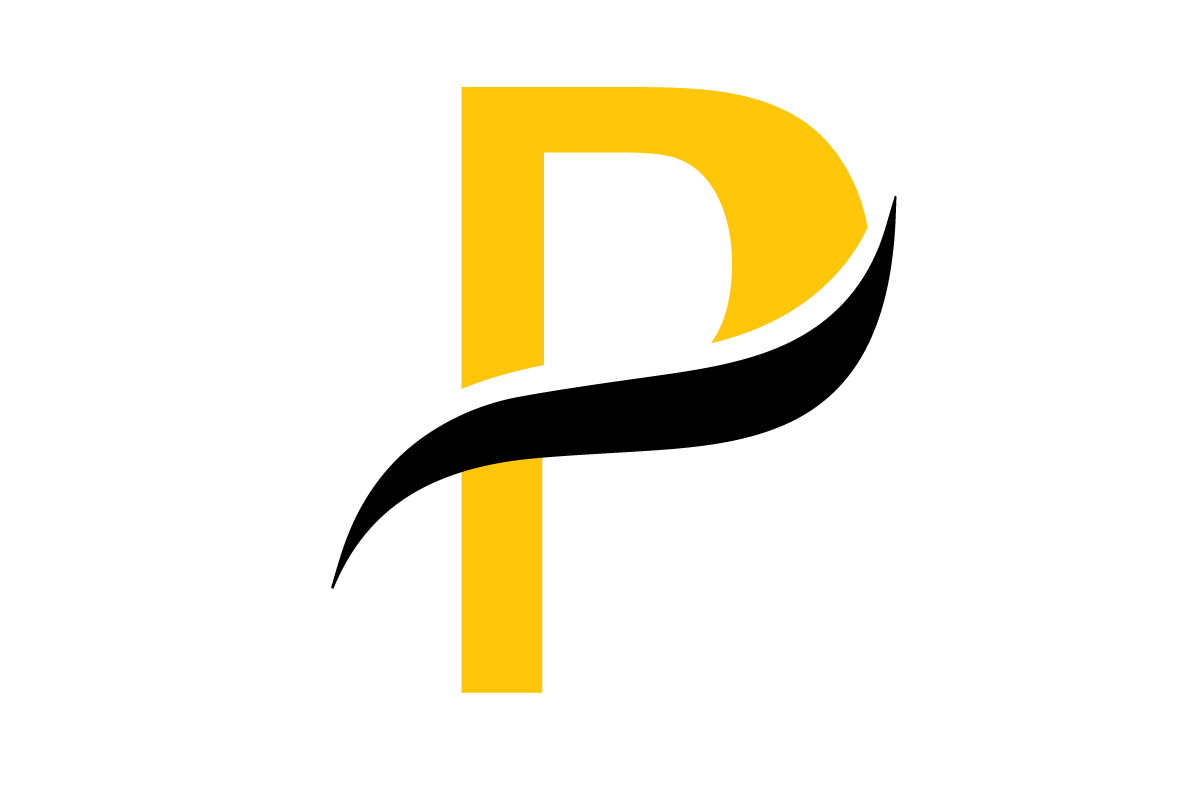The Evolution From Flat to Dimensional
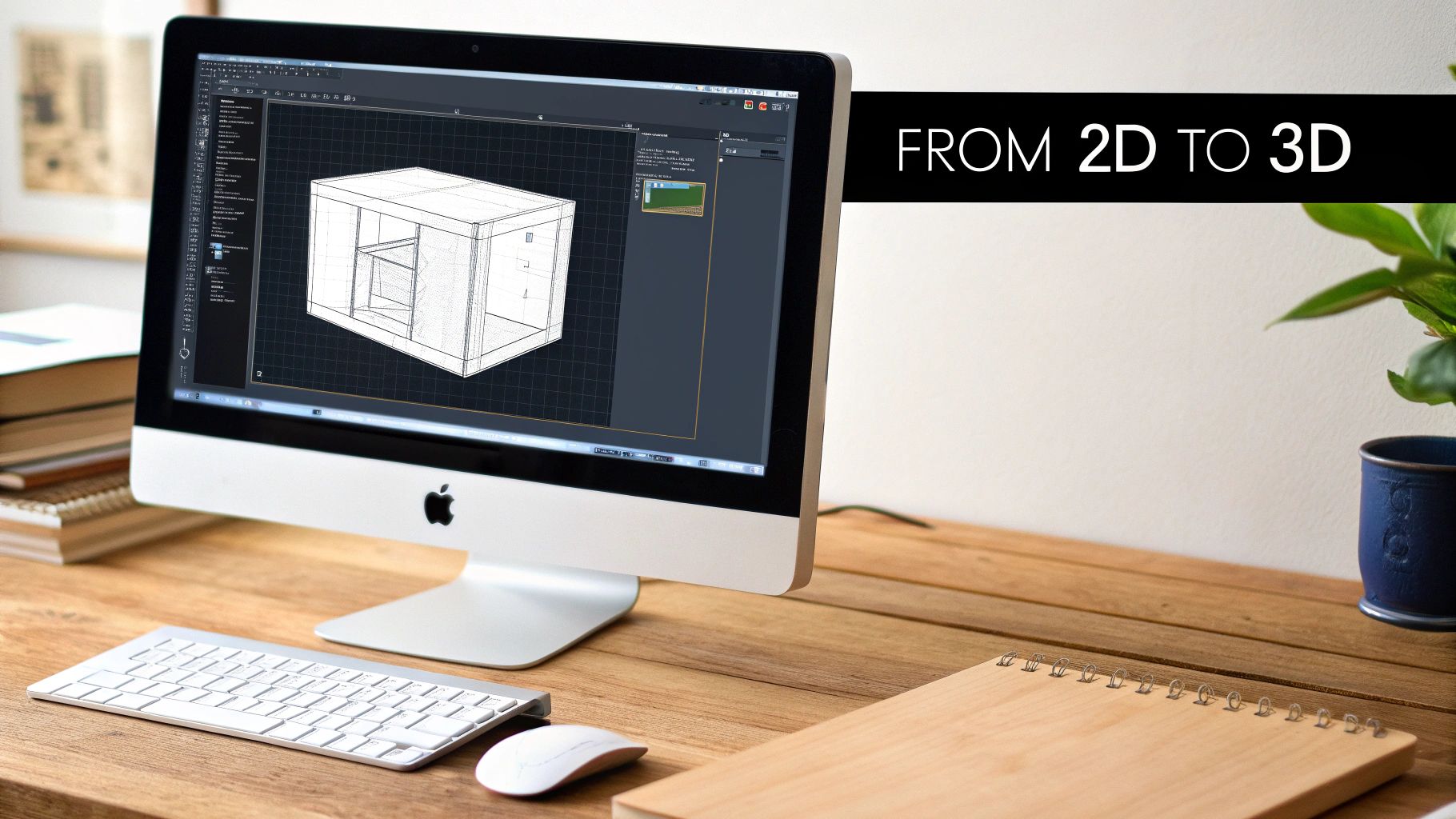
The journey of transforming 2D images into 3D is a captivating tale of technological progress, spanning decades of ingenuity. This process has undergone remarkable changes, from simple depth illusions to intricate digital recreations.
Early methods, such as the anaglyphic 3D glasses prevalent in the 1950s, provided a glimpse into the third dimension. However, these were hampered by drawbacks like color distortion and limited depth perception. Despite their basic nature, these early efforts paved the way for the subsequent digital transformation.
The shift towards digital techniques began in the 1990s, marking a pivotal moment in our approach to dimensionality. Computer vision techniques began to emerge, unlocking new possibilities for 2D to 3D conversion. This era witnessed a transition away from simple optical illusions towards more sophisticated computational methods. The digital age enabled more nuanced and accurate 3D representations, laying the foundation for the advanced techniques we utilize today.
The early 2000s brought a surge in depth-based approaches, with methods like Depth-Image-Based Rendering (DIBR) proving revolutionary. DIBR, introduced by Fehn in 2004, estimates depth maps from 2D frames to create stereoscopic views. This was a major leap forward, making 3D content more accessible and realistic. Learn more about the historical progression at History of 2D to 3D Video Conversion Techniques.
The Rise of AI in 3D Conversion
Further propelling this advancement was the arrival of machine learning, particularly deep learning techniques. These powerful algorithms, notably Convolutional Neural Networks (CNNs), have transformed 2D to 3D conversion. For example, the "Deep3D" method from 2016 used CNNs to generate stereoscopic 3D images from 2D images by training on stereo pairs from existing 3D movies. These neural networks can discern complex patterns and relationships within images, enabling them to deduce depth information and create compelling 3D models. This development has unlocked new possibilities for 3D image creation.
The Impact on Accessibility
Perhaps the most significant consequence of these advancements is the democratization of 3D creation. What was once a specialized domain requiring costly equipment and significant expertise is now accessible to creators of all skill levels. User-friendly software and AI-powered tools are empowering artists, designers, and hobbyists to bring their 2D creations to life in 3D. This increased accessibility is fostering innovation and broadening the applications of 3D across diverse industries, from entertainment and e-commerce to medicine and education. This ongoing evolution promises further exciting developments, blurring the lines between the second and third dimensions.
Essential Tools to Bring Your 2D Images to Life
Turning 2D images into 3D models was once a complex process requiring specialized skills and expensive software. Now, a wide range of tools makes 3D modeling accessible to everyone, from hobbyists to seasoned professionals. Choosing the right tool hinges on your project's specifics, your technical skills, and your budget.
Software Solutions For Every Level
Several programs excel at 2D to 3D conversion. Some cater to beginners, while others provide advanced features for experienced 3D artists. Here are a few popular options:
-
Blender: This open-source software is a comprehensive 3D creation suite, offering a robust set of tools for modeling, animation, and rendering. Blender is powerful, but it does have a steep learning curve.
-
ZBrush: ZBrush is a digital sculpting tool ideal for creating highly detailed organic models. It's favored by character designers and artists in film and games. Its specialized interface can be challenging for beginners.
-
Smoothie 3D: This beginner-friendly option simplifies 3D model creation from 2D images. While easy to learn, its simplified feature set may limit advanced users.
-
Nvidia Canvas: Nvidia Canvas uses AI to transform simple brushstrokes into realistic landscapes, streamlining environment creation. Its strength lies in realistic textures and lighting, though detailed modeling is limited.
For those seeking additional resources, exploring the world of 3D animation can be beneficial. If you are based in the Netherlands and seeking professional services, consider using a guide to 3D Animatie Laten Maken for valuable insights.
AI-Powered Tools: The Future of 3D Conversion
Artificial intelligence is transforming 3D modeling. AI-powered tools, such as specific plugins within programs like Blender or dedicated platforms like Meshy.ai, simplify the conversion process. Users can now generate 3D models from 2D images with just a few clicks. These tools often utilize techniques like neural radiance fields (NeRFs) to create detailed volumetric representations. Some AI tools specialize in specific conversions, such as turning portraits into 3D busts or generating 3D environments from landscape photos.
This increased efficiency empowers rapid prototyping and experimentation, especially for users with limited 3D modeling background. Even beginners can now create impressive 3D models with minimal effort. While AI excels at automation, fine-tuning and customization may still require manual adjustments.
Choosing The Right Tool For Your Needs
Selecting the best tool depends on understanding the strengths and weaknesses of each option. For intricate projects demanding precise control and detailed sculpting, Blender or ZBrush are excellent choices. For users seeking a streamlined workflow and quick results, AI-powered tools or beginner-friendly options are a better fit. The following infographic summarizes the benefits driving 3D conversion adoption:
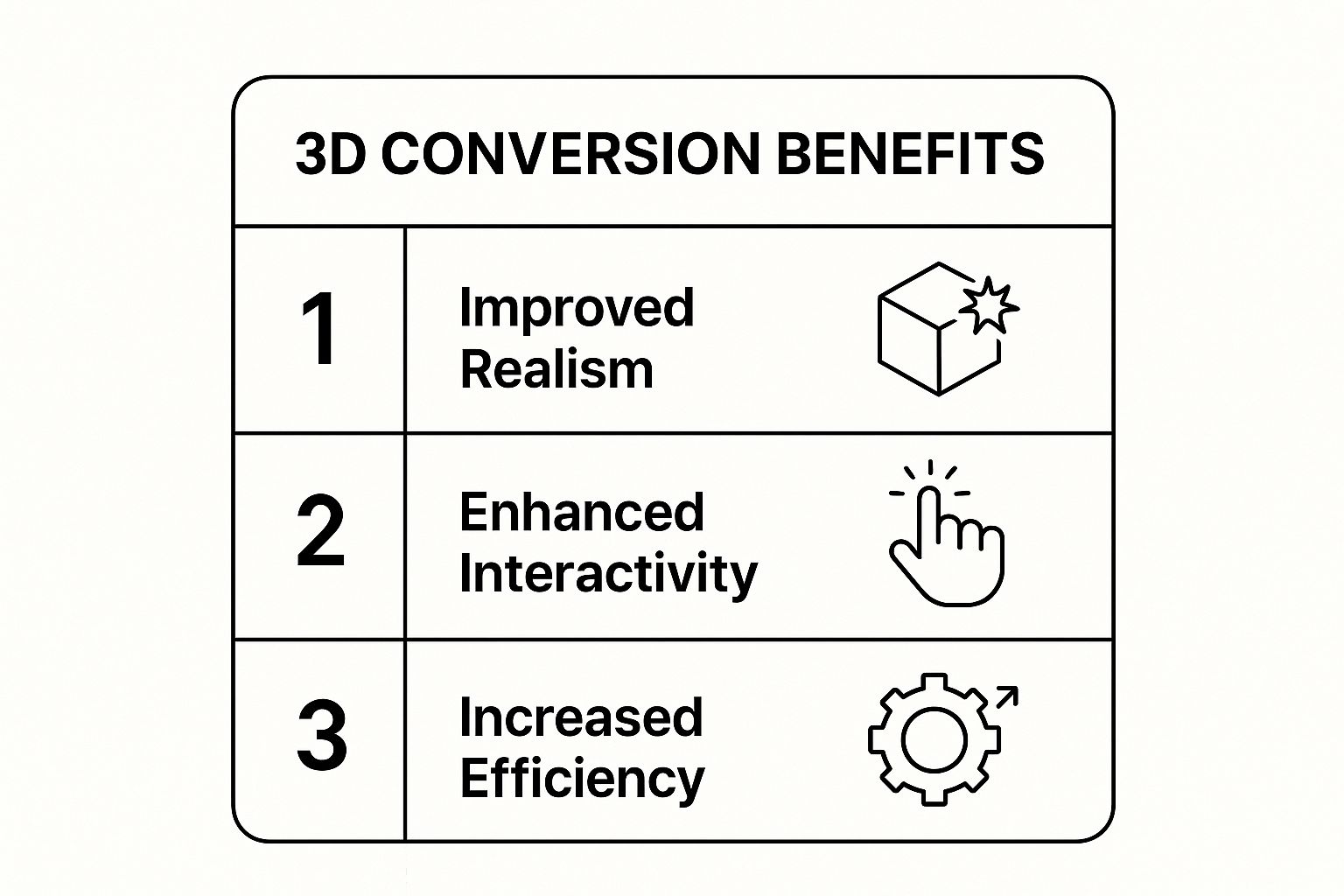
The infographic highlights key advantages: improved realism, enhanced interactivity, and increased efficiency. These factors contribute to broader adoption across diverse fields, from entertainment to e-commerce.
To help you choose, here's a comparison of some popular 2D to 3D conversion tools:
2D to 3D Conversion Tools Compared
A comprehensive comparison of leading software tools for turning 2D images into 3D models, evaluating their real-world performance across key factors that matter most to creators.
| Software | Best For | Learning Curve | Key Features | Price Range | Output Quality |
|---|---|---|---|---|---|
| Blender | Experienced users, complex projects | Steep | Comprehensive modeling, animation, rendering tools | Free (open-source) | High |
| ZBrush | Character design, organic modeling | Steep | Digital sculpting, high detail | Paid (subscription/perpetual) | Very High |
| Smoothie 3D | Beginners, simple projects | Easy | Simplified workflow, quick results | Free | Moderate |
| Nvidia Canvas | Environment creation, concept art | Moderate | AI-powered landscape generation, realistic textures | Free (requires compatible Nvidia hardware) | High (for specific applications) |
| Meshy.ai | AI-powered 3D modeling | Easy | Automated conversion, NeRFs | Freemium (free tier and paid plans) | Moderate to High |
This table summarizes the key differences between these popular tools, allowing you to quickly compare their features and suitability for your needs.
Cost Considerations and Access
Another crucial factor is cost. Blender is free to use. Professional tools like ZBrush require a significant investment. Many AI-powered platforms offer a combination of free and paid features.
The best tool for you is the one that aligns with your specific needs, project requirements, and technical abilities. Experimenting with different programs will help you find the optimal solution for your creative goals. As the technology evolves, we can expect even more powerful and accessible tools to emerge.
From Flat to Dimensional: The Practical Process
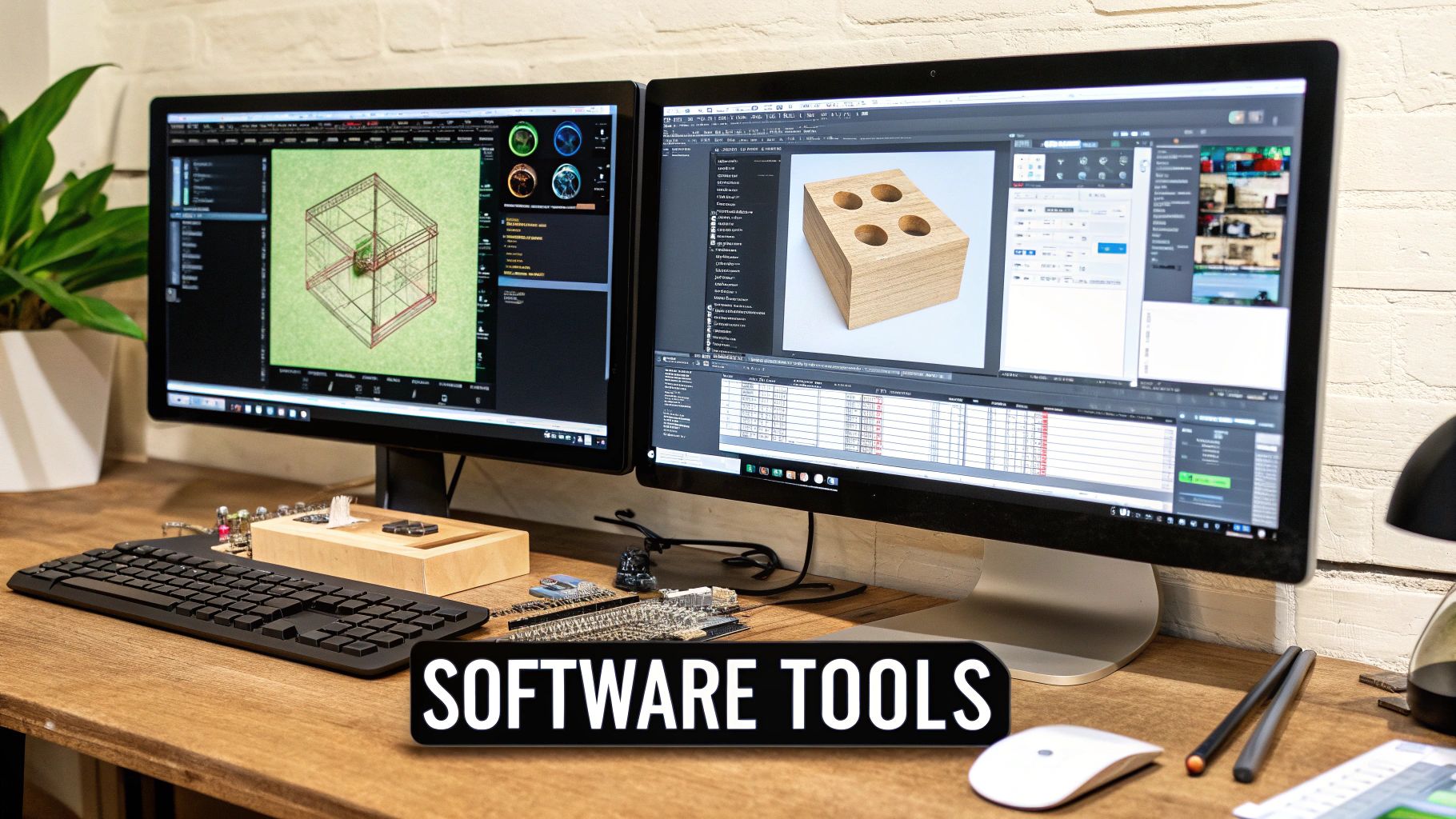
Transforming 2D images into 3D models is a multi-step process, with each stage playing a vital role in the final dimensional result. This journey begins with carefully selecting the right source image, a factor that significantly impacts the ease and effectiveness of the conversion. Some images translate seamlessly into 3D, while others present unique challenges.
Choosing the Right Source Image
The quality and characteristics of your source image heavily influence the success of your 2D to 3D conversion. High-resolution images are essential, providing the necessary detail and well-defined edges for accurate depth and shape interpretation by 3D modeling software like Blender. Images with blurry or ambiguous areas can lead to distorted 3D models. Consider the perspective and lighting of the image as well. A front-facing image with even lighting typically produces better results than one taken at an extreme angle or with harsh shadows.
Preparing Your 2D Image
Once you have your image, proper preparation is crucial. This often involves techniques like segmentation and masking. Segmentation isolates the main subject from the background, focusing the software on the relevant area. Masking refines this selection, enabling precise isolation of specific image parts. This is especially useful for complex images or when removing unwanted elements. These techniques considerably improve the final 3D model's quality and accuracy.
Generating Depth Maps
The foundation of any 3D model is the depth map, which represents the distance of each pixel from the camera. This map helps the software understand spatial relationships within the image, building a three-dimensional representation. Depth maps can be generated manually, requiring careful attention to detail, or automatically using software tools like MeshLab. Automated tools use algorithms to estimate depth, though manual refinement may be necessary for correcting inconsistencies or enhancing specific areas.
Extracting and Applying Textures
Textures add surface details and realism, bringing your 3D model to life. The texture extraction process maps color and pattern information from the 2D image onto the 3D model. Precise alignment is vital to avoid distortions or stretching. Accurate texture application ensures visual fidelity, preserving the original image’s characteristics. To create compelling 3D images, familiarize yourself with the right tools. For example, you can learn how to easily add 3D objects.
Troubleshooting Common Issues
Beginners often encounter issues during 2D to 3D conversion. Depth inconsistencies can cause distortions or unnatural surface variations. Texture stretching can occur during the mapping process, resulting in blurry or distorted textures. Addressing these issues involves refining the depth map, adjusting texture parameters, or further preparing the source image. Patience and attention to detail are key for achieving a polished and accurate final product.
Refining and Optimizing the 3D Model
After the initial 3D model is generated, refinement and optimization are crucial for professional-looking results. This might involve smoothing rough surfaces, adding finer details, or simplifying the model’s geometry for better performance. Consider optimizing the model for specific applications like game development or 3D printing by adjusting its polygon count or file format, ensuring compatibility and optimal performance.
Taking Advantage of AI-Powered Tools
AI has significantly changed 2D to 3D conversion, providing automated tools that simplify the process. These tools can automatically generate depth maps, extract textures, and even create basic 3D models from a single image. While AI tools speed up the workflow, human input is still crucial. Creative decisions, fine-tuning, and quality control remain essential for achieving truly impressive results.
Combining Techniques for Optimal Results
Combining manual techniques and automated tools often produces the best results. Using AI for initial generation and manual techniques for refinement creates an efficient workflow while maintaining control over the final product. This approach leverages the speed of automated tools and the precision of manual adjustments. The future of 2D to 3D conversion lies in this synergy, further bridging the gap between two dimensions.
Exploring Creative Applications
Converting 2D images to 3D models unlocks a wealth of creative possibilities, from revitalizing old photographs to creating interactive virtual environments. The applications are vast and constantly expanding. Experiment with different software, techniques, and source materials to discover new approaches and push creative boundaries. As technology advances, the potential of 2D to 3D conversion continues to grow, presenting exciting opportunities for artists, designers, and innovators.
How Hollywood Transforms Flat Images to Immersive Worlds
The magic of cinema often lies in its ability to make the ordinary extraordinary. A prime example is the process of converting 2D images into 3D. This isn't simply about adding depth; it's about crafting immersive worlds that draw viewers in and enhance their cinematic experience. Let’s delve into how Hollywood studios accomplish this, focusing on the collaborative efforts and innovative techniques involved.
The Collaborative Nature of 2D to 3D Conversion
Transforming a flat image into a three-dimensional one isn't a one-person job. It requires the coordinated efforts of specialized teams working in concert. These teams ensure that the converted elements blend seamlessly with the film’s other visual components.
Depth artists meticulously sculpt depth maps, creating the illusion of three-dimensionality. Texture artists enhance 3D models with realistic surfaces and details. Lighting specialists then fine-tune the lighting to complement the 3D conversion. Finally, compositors bring everything together, creating the final, visually stunning shot.
This intricate process underscores the importance of clear communication and coordination. Each stage builds on the previous one, forming a cohesive workflow. This collaborative approach is crucial for achieving the realism and immersion that audiences now expect from 3D films.
Landmark Projects: A Testament to the Power of Conversion
The film industry has witnessed remarkable accomplishments in 2D to 3D conversion, showcasing its effectiveness as a cinematic tool. In 2008, Disney and Bruckheimer films partnered with In-Three for the live-action conversion of G-Force. This project garnered the 2D to 3D Conversion Project of the Year award from the International 3D Society.
This success set the stage for future endeavors, leading Disney back to In-Three for the conversion of scenes in Alice In Wonderland (2010). Alice In Wonderland also incorporated elements created by Matte World Digital and Café FX, showcasing the collaborative nature of these projects. Learn more about these groundbreaking conversions here. By the early 2010s, over 30% of major films were released in 3D, reflecting the growing popularity of 3D cinema.
Beyond Film: Applications in Gaming and Beyond
The techniques developed in Hollywood extend beyond the realm of film. Game studios are increasingly employing similar 2D to 3D conversion methods to revitalize classic titles. This brings enhanced visuals and more immersive gaming experiences to modern audiences, demonstrating the versatility and broad applicability of this technology.
Commercial Impact and the Future of 3D
The commercial success of 3D converted films has fueled continued investment and development in these techniques. While native 3D productions often have higher upfront costs, 2D to 3D conversion allows studios to deliver the 3D experience to a wider audience. This broader reach promotes further innovation and expands the market for 3D content.
The future of 3D likely involves a blend of native 3D filming and strategic 2D to 3D conversion. This provides filmmakers with flexibility, allowing them to choose the optimal approach for each project. This creates exciting new possibilities, blurring the lines between the second and third dimensions and pushing the boundaries of visual storytelling.
Professional Techniques That Transform Your 2D to 3D Results
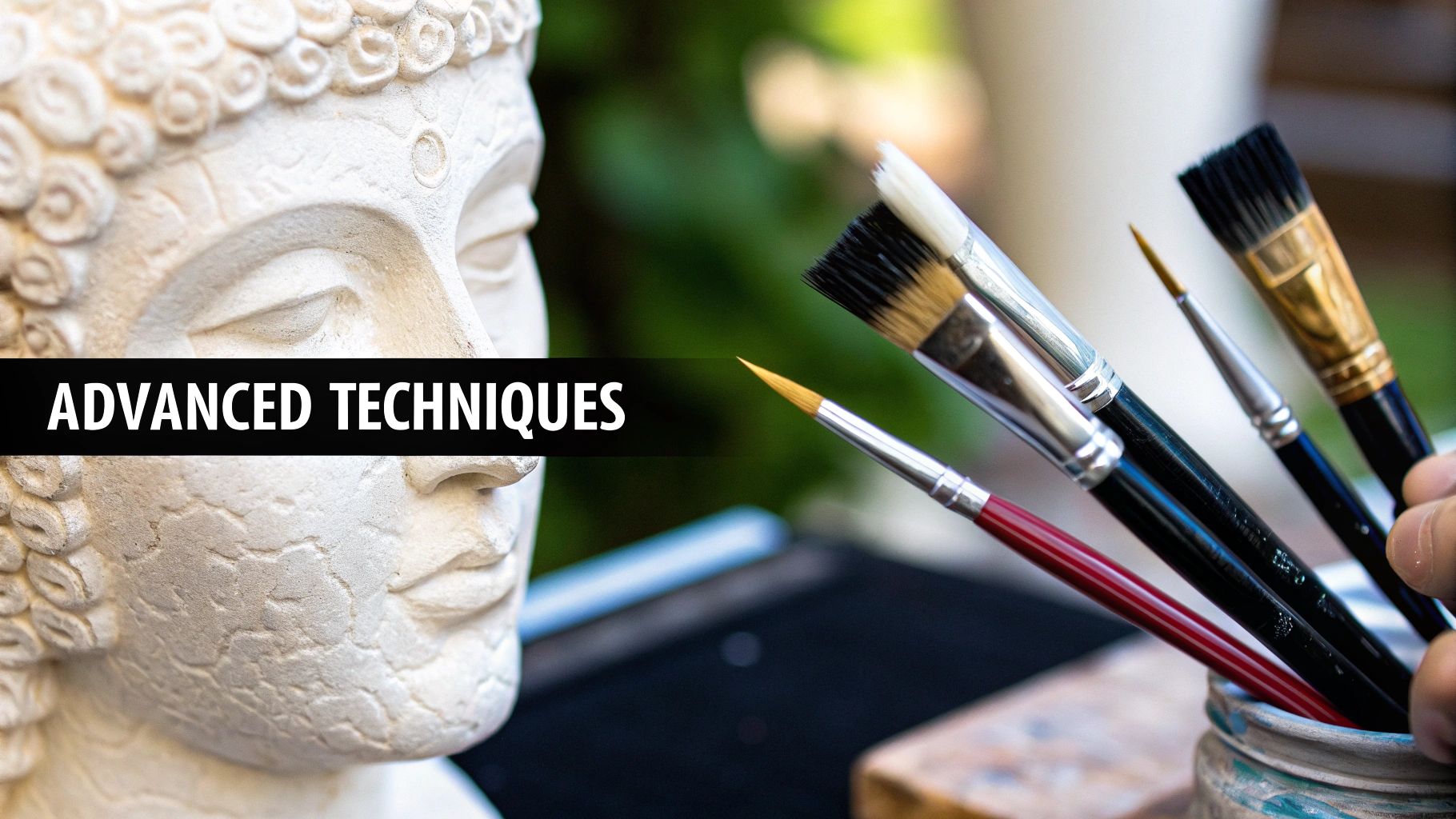
Elevating your 2D to 3D image conversions involves understanding professional techniques that go beyond simple extrusion. The goal is to achieve realistic and accurate 3D models. Let's explore some of these advanced methods.
Multi-View Geometry: Understanding Spatial Relationships
Multi-view geometry is a crucial technique. It uses multiple images of the same object from different perspectives. Similar to triangulation, the more viewpoints, the greater the positional accuracy.
Multi-view geometry analyzes the subtle perspective shifts between images to calculate precise 3D coordinates for every point in the scene. This creates accurate 3D models suitable for various applications like architectural visualization and medical imaging.
Neural Radiance Fields (NeRFs): Light and Detail Captured
Neural Radiance Fields (NeRFs) represent a significant advancement. NeRFs use deep learning to create volumetric representations of a scene. Instead of creating a surface mesh, they model how light interacts with the scene from all possible angles.
This allows NeRFs to capture fine details, complex lighting, and even translucent materials with remarkable accuracy. The result is highly realistic 3D models ideal for visualizations and virtual reality (VR) applications.
Generative Adversarial Networks (GANs): Automating 3D Conversion
Generative Adversarial Networks (GANs) are transforming 2D to 3D conversion. GANs consist of two neural networks: a generator and a discriminator. The generator creates 3D models from 2D images, and the discriminator evaluates their realism.
This competitive learning process constantly improves the generator's output. This adversarial training leads to more automated and efficient 2D to 3D conversion workflows.
Tailoring Techniques to Source Material
Different 2D images require specific techniques. Architectural photos benefit from precise measurements and structured data, often from photogrammetry. Portraits require careful handling of textures and facial features, often using high-resolution photogrammetry and sculpting tools like ZBrush. Landscapes involve terrain generation, vegetation, and vast scale, often combining photogrammetry, procedural modeling, and manual artistry using software like Blender.
Transforming Your 3D Conversion Workflow
These professional techniques represent more than just technical improvements. They change how creators approach 2D to 3D conversion. By understanding and applying these methods, you can achieve several benefits:
- Increased Accuracy: Multi-view geometry ensures spatial precision.
- Enhanced Realism: NeRFs capture the nuances of light and material interaction.
- Improved Efficiency: GANs automate aspects of the process.
- Tailored Approach: Specialized techniques optimize results for various subjects.
The following table illustrates the growth and opportunities within the 3D conversion market across different sectors:
3D Conversion Market Growth by Industry
| Industry Sector | Market Size (in millions) | Annual Growth Rate | Primary Applications | Future Projection |
|---|---|---|---|---|
| Media and Entertainment | $1,500 | 15% | Film, gaming, animation | Strong growth expected due to demand for realistic VFX and game assets |
| Healthcare | $750 | 12% | Medical imaging, surgical planning | Steady growth anticipated due to increasing adoption of 3D modeling in medical procedures |
| Architecture, Engineering, and Construction (AEC) | $500 | 10% | Building Information Modeling (BIM), architectural visualization | Moderate growth predicted due to the rising use of 3D models in construction and design |
| Manufacturing | $400 | 8% | Product design, prototyping | Consistent growth expected as 3D printing and digital manufacturing continue to expand |
| E-commerce | $250 | 20% | Product visualization, augmented reality shopping experiences | Exponential growth projected as online retailers embrace 3D models to enhance customer engagement |
This table provides a snapshot of the dynamic 3D conversion market, showing promising growth across several sectors. The media and entertainment industry currently leads, but e-commerce exhibits the highest growth potential.
Incorporating these professional techniques will enhance your results and elevate your 2D to 3D conversion skills. As AI-driven tools continue to evolve, these techniques are becoming more accessible, empowering creators to push the boundaries of 3D modeling.
The Expanding Market for 3D Conversion
The ability to transform 2D images into 3D isn't just a neat technical feat; it's a rapidly growing market impacting numerous industries. This growth is driven by several factors, from the increasing desire for immersive experiences to the rise of technologies like VR/AR and readily available 3D printing. This expansion creates lucrative opportunities for businesses and individuals skilled in 2D to 3D conversion.
Market Growth and Key Drivers
The global market for 3D visual effects, including 2D to 3D conversion, has experienced significant growth. In 2011, the market was valued at approximately $1.4 billion, and projections indicated it would reach over $2.5 billion by 2016. This growth is largely due to the increasing demand for immersive experiences in cinema and gaming, along with technological advancements. Even technologies like polarized glasses, dating back to the 1930s, play a role. The initial rise in popularity of 3D films in the 1950s, spurred by films like Bwana Devil (1952), further cemented this interest.
Today, 3D films contribute significantly to box office revenue, with many blockbusters released in 3D globally. Learn more about the history of 3D film here. Beyond entertainment, other industries are contributing to this market expansion.
Industry Applications and Opportunities
The demand for 3D conversion is growing rapidly across diverse fields:
-
E-commerce: Online retailers are utilizing 3D models to improve product displays, enabling customers to interact with products virtually. This interaction can lead to increased sales and reduced return rates. Furniture companies, for example, use 3D models so customers can visualize furniture in their homes before purchasing.
-
Medical Imaging: 2D medical scans are being converted into 3D models to create detailed visualizations for diagnosis, surgical planning, and patient education. This improves understanding and increases the precision of medical procedures.
-
Architecture: Architects use 3D models generated from 2D blueprints for client presentations and design reviews. This enhances communication and simplifies project approvals.
These are just a few examples of how various industries are investing in 2D to 3D conversion. This increasing demand presents excellent opportunities for skilled professionals.
Positioning Yourself for Success
Whether you are an artist, a developer, or a business owner, understanding this market is crucial. For individuals, mastering 2D to 3D conversion techniques opens doors to exciting career paths across multiple sectors. For businesses, integrating this technology offers competitive advantages and generates new revenue streams. Companies focusing on AI-driven medical imaging, such as PYCAD, are prime examples of capitalizing on this growing trend. The future of 2D to 3D conversion appears promising, making now the ideal time to prepare for success in this dynamic field.
Beyond Entertainment: Real-World Applications
Turning 2D images into 3D models has implications far beyond entertainment. This technology is reshaping industries, offering solutions to complex problems, and opening doors to exciting possibilities. From visualizing architectural designs to enhancing medical diagnoses, the applications are diverse and continually expanding.
Architecture and Construction: Visualizing the Future
Architects use 2D to 3D conversion to transform blueprints into interactive experiences. Instead of interpreting technical drawings, clients can virtually "walk through" a future building, exploring every detail in a realistic 3D environment. This visualization enhances communication and helps clients understand the design, streamlining project approvals. It also facilitates better collaboration among design teams, allowing them to identify and resolve potential issues early in the project lifecycle, leading to cost savings and more efficient workflows.
Medical Imaging: A New Dimension in Diagnosis
2D to 3D conversion is improving medical diagnoses and treatment. 2D medical scans like X-rays and CT scans are converted into detailed 3D models of organs, bones, and tissues. This gives physicians a more complete understanding of a patient's anatomy. Surgeons can use 3D models for pre-operative planning, simulating procedures and identifying potential complications. This enhances surgical precision, improves patient outcomes, and promotes personalized treatment. The technology also plays a crucial role in patient education, simplifying complex medical information.
E-commerce: Transforming the Online Shopping Experience
E-commerce businesses benefit from 2D to 3D image conversion. By creating interactive 3D models from product photos, they enhance the online shopping experience. Customers can rotate, zoom, and examine products from all angles. This interactivity builds consumer confidence, reduces purchase uncertainty, and lowers product return rates. Providing a realistic view of products online helps customers make informed decisions, leading to greater satisfaction and higher conversion rates. This is a significant advantage in online retail.
Education and Cultural Preservation: Bridging the Past and Future
2D to 3D conversion is changing how we learn and preserve our heritage. Educators use 2D images to create engaging 3D learning tools, bringing historical artifacts and scientific concepts to life. This immersive learning fosters deeper understanding and knowledge retention. Cultural preservation teams create 3D models of historical sites and artifacts from old photographs. This digital archiving ensures that these treasures remain accessible for future generations, especially important for documenting fragile or endangered cultural heritage.
The Expanding Potential of 2D to 3D Conversion
The potential applications of 2D to 3D image conversion are vast. We can anticipate further integration of this technology into our daily lives, impacting how we work, learn, shop, and interact with the world. From realistic video games to advanced medical simulations, the possibilities are truly exciting.
Are you ready to experience the power of AI in medical imaging? PYCAD, a leading company specializing in AI-driven medical imaging solutions, offers cutting-edge services from data handling and model training to seamless deployment. Visit PYCAD today to discover how we can optimize your medical devices and enhance healthcare outcomes.
